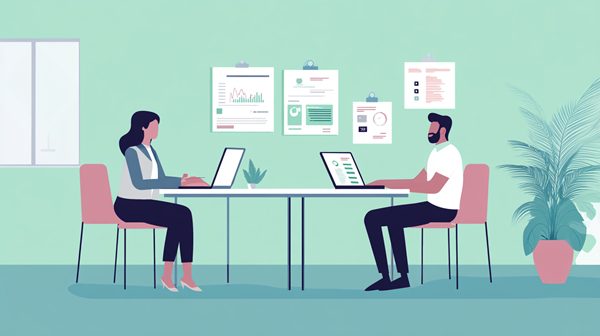Key Takeaways
- Understand the Impact of Bad Credit: Bad credit can make qualifying for equipment finance more challenging, but it doesn’t make it impossible. In Australia, many lenders will assess factors beyond your credit score.
- Seek Specialist Lenders: Some lenders focus specifically on customers with bad credit, providing tailored financing options to meet your needs.
- Provide a Strong Business Case: Demonstrating the ability to repay your loan through cash flow projections or offering collateral can greatly improve your chances.
- Explore Alternative Financing Options: Leasing or asset-based finance are viable alternatives to traditional loans, often with more flexible terms for those with bad credit.
- Prepare for Higher Costs: Bad credit may result in higher interest rates, but shopping around and negotiating terms can help mitigate this.
Introduction: Securing Equipment Finance with Bad Credit in Australia
Securing financing for your business can be a significant challenge when you have bad credit. Whether you're looking to purchase new machinery, vehicles, or technology, your credit history can play a major role in the lending process. However, bad credit doesn't necessarily mean you can't secure the equipment finance your business needs. With the right approach, you can still gain access to essential funding.
In Australia, many businesses with poor credit scores manage to qualify for equipment finance by working with the right lenders and preparing a strong application. In this guide, we'll walk you through the steps involved in qualifying for equipment finance, provide tips to improve your chances, and explain alternative financing options.
What is Equipment Finance?
Equipment finance refers to the process of securing a loan or lease to purchase or lease business equipment. This type of financing is popular in industries ranging from construction to hospitality, as it allows businesses to get the necessary equipment without the high upfront costs.
There are two primary types of equipment finance:
- Equipment Loans: Traditional loans where the equipment serves as collateral.
- Leasing: Leasing the equipment for a set period, with the option to purchase at the end of the lease term.
In both cases, the lender or leasing company holds an interest in the equipment until the loan or lease is paid off.
How Bad Credit Affects Equipment Financing
Bad credit generally refers to a low credit score, often below 600, which indicates a history of missed payments, defaults, or high levels of debt. This can make securing traditional loans difficult. When it comes to equipment finance, lenders typically assess your creditworthiness to gauge how likely you are to repay the loan. With bad credit, you're considered a higher-risk borrower, which may result in:
- Higher Interest Rates: Lenders may offer loans at higher rates to compensate for the perceived risk.
- Lower Loan Amounts: You might be offered a smaller loan, depending on your credit history and current financial situation.
- Stricter Terms: Lenders may require a larger deposit or a shorter loan term to limit their exposure to risk.
Despite these challenges, bad credit is not necessarily a barrier to equipment finance. Many lenders offer specialised products for borrowers with less-than-perfect credit scores.
Steps to Qualify for Equipment Finance with Bad Credit
1. Review Your Credit Report
Before applying for finance, it's important to check your credit report. Understanding your credit situation will allow you to address any errors and gain insights into your financial health. If your credit score is low due to past mistakes, you can work on improving it by:
- Paying off outstanding debts.
- Settling overdue bills.
- Reducing credit card balances.
2. Approach Specialist Lenders
Lenders in Australia who specialise in bad credit loans can offer more flexible terms for those with poor credit scores. These lenders focus less on your credit history and more on the current financial health of your business. Some specialist lenders to consider are:
- Prospa: Known for offering business loans and equipment finance to businesses with bad credit.
- Moula: Specialises in providing loans to businesses with limited credit history or poor credit scores.
- Judo Bank: Offers loans and finance options to SMEs, including those with bad credit.
3. Offer Collateral
Providing collateral can increase your chances of getting approved for equipment finance. The equipment you're purchasing may be used as collateral, which gives the lender confidence that they can recover their investment if you default on the loan.
- Personal Assets: If your business doesn’t have enough collateral, you may offer personal assets, like property, to secure the loan.
- Other Business Assets: Equipment you already own can also be used as collateral.
4. Demonstrate Strong Cash Flow
Lenders want to ensure that your business can repay the loan. A positive cash flow or strong revenue projections can demonstrate your ability to meet loan obligations. To improve your chances, you should:
- Provide detailed cash flow statements showing consistent income.
- Include financial projections that demonstrate future growth potential.
- Offer tax returns and other financial documents to support your business’s viability.
5. Consider a Guarantor
Having a guarantor can increase your chances of qualifying for equipment finance. A guarantor is someone with a good credit score who agrees to take on the responsibility of the loan if your business defaults. This can significantly reduce the risk for lenders and improve your application.
Types of Financing for Bad Credit Businesses
While traditional equipment finance loans may be harder to secure, there are alternative options for bad credit borrowers:
1. Leasing
Leasing allows businesses to rent the equipment for a set term, with the option to purchase at the end. This can be an ideal solution for businesses with bad credit because it requires less upfront capital, and the leasing company usually has more flexible terms.
2. Asset-Based Finance
With asset-based finance, the lender offers a loan based on the value of assets, such as machinery or vehicles, that your business owns. This can be an excellent option if your credit score is low, as the equipment itself serves as collateral.
3. Chattel Mortgage
A chattel mortgage is a type of secured loan where the business takes ownership of the equipment immediately, but the lender holds a security interest in it until the loan is paid off. This type of financing can offer favourable terms for businesses with bad credit.
Common Questions About Equipment Finance with Bad Credit
1. Can I get approved for equipment finance if my business has bad credit?
Yes, many Australian lenders offer specialised products for businesses with bad credit. While you may face higher interest rates or stricter terms, it’s still possible to secure the financing you need.
2. How can I improve my chances of getting equipment finance with bad credit?
To improve your chances, focus on strengthening your application by demonstrating a positive cash flow, offering collateral, and approaching lenders that specialise in bad credit.
3. What interest rates can I expect with bad credit?
Interest rates for equipment finance with bad credit in Australia typically range from 7% to 15%, depending on the lender and the risk assessment. You may also face higher fees or shorter repayment periods.
4. Are there any government programs that help businesses with bad credit?
The Australian government offers a range of support programs for businesses, including low-interest loans and grants. However, these programs may have specific eligibility requirements and may not apply to businesses with bad credit.
5. How long does it take to get approved for equipment finance with bad credit?
Approval times vary, but with a specialised lender, you can typically expect a decision within a few days. However, if additional documents or collateral are required, it could take longer.
Conclusion
Securing equipment finance with bad credit in Australia may seem like a daunting task, but it is far from impossible. By taking the right steps—such as reviewing your credit report, approaching specialist lenders, offering collateral, and demonstrating strong cash flow—you can improve your chances of approval. Additionally, exploring alternative financing options like leasing or asset-based finance can provide the flexibility needed to get your business the equipment it requires.
With the right knowledge and preparation, you can successfully navigate the process and secure the financing needed to grow and expand your business, even with a less-than-perfect credit history.


